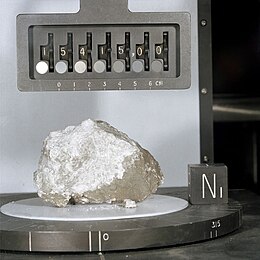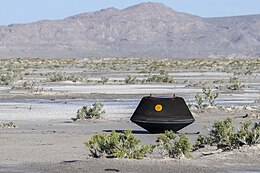
Back مهمة العودة بالعينات Arabic Missió de retorn de mostres Catalan Sample return mission German Specimen-alveniga misio Esperanto مأموریت آوردن نمونه Persian Mission de retour d'échantillons French Misi pengembalian sampel ID Missione di ritorno del campione Italian サンプルリターン Japanese 샘플 리턴 미션 Korean


A sample-return mission is a spacecraft mission to collect and return samples from an extraterrestrial location to Earth for analysis. Sample-return missions may bring back merely atoms and molecules or a deposit of complex compounds such as loose material and rocks. These samples may be obtained in a number of ways, such as soil and rock excavation or a collector array used for capturing particles of solar wind or cometary debris. Nonetheless, concerns have been raised that the return of such samples to planet Earth may endanger Earth itself.[1]
To date, samples of Moon rock from Earth's Moon have been collected by robotic and crewed missions; the comet Wild 2 and the asteroids 25143 Itokawa, 162173 Ryugu, and 101955 Bennu have been visited by robotic spacecraft which returned samples to Earth; and samples of the solar wind have been returned by the robotic Genesis mission.
In addition to sample-return missions, samples from three identified non-terrestrial bodies have been collected by other means: samples from the Moon in the form of Lunar meteorites, samples from Mars in the form of Martian meteorites, and samples from Vesta in the form of HED meteorites.
© MMXXIII Rich X Search. We shall prevail. All rights reserved. Rich X Search